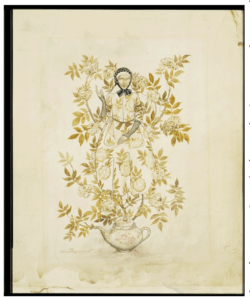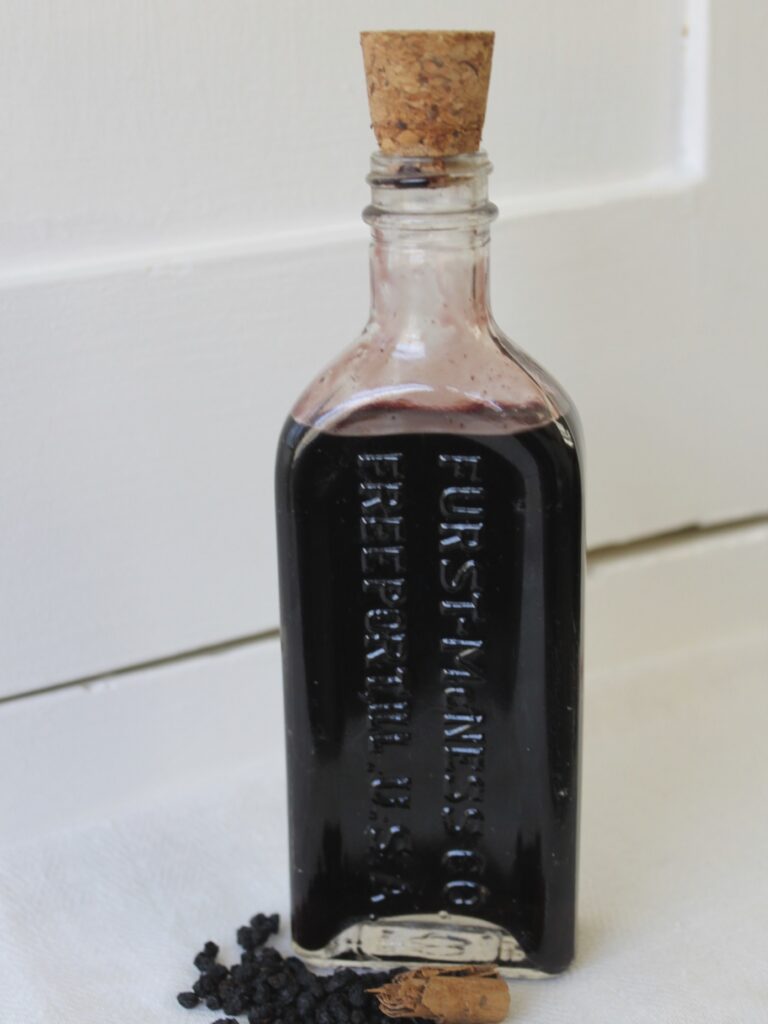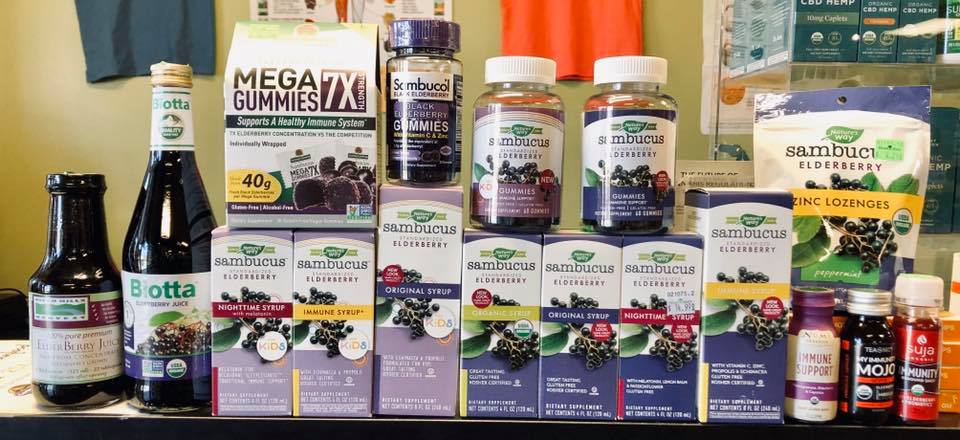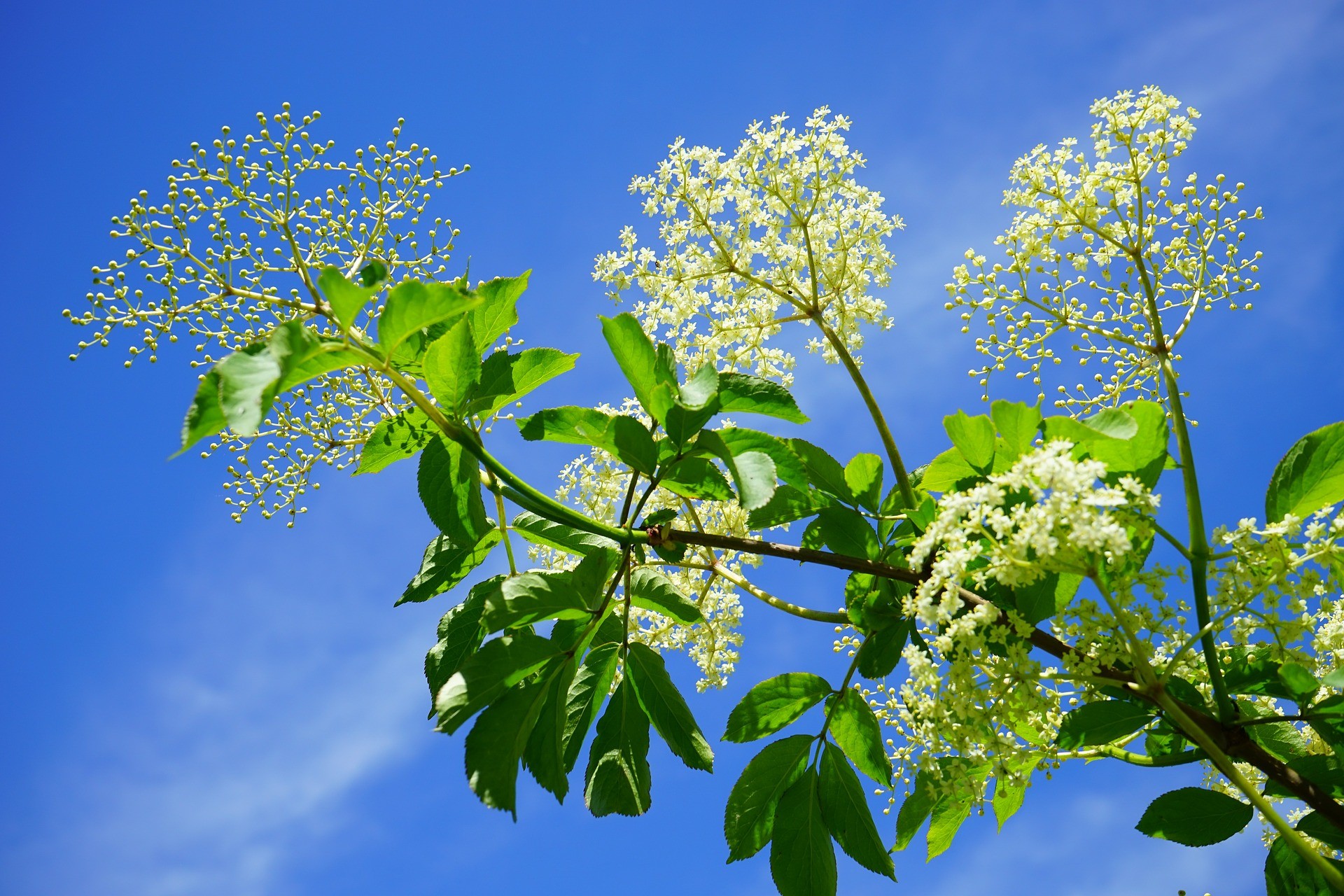There is myth, lore, legend and magic associated with Elderberry, in addition to its revered health benefits. Taking a little trip into the history and ethnobotany of Elderberry proves to be a fun time. This small tree has been with humans for a long time. Many Native American nations have reported extensive knowledge on uses for various parts of Elderberry. Seeds found in Switzerland Neolithic pole-dwellings hint that Elderberry was cultivated as early as 2000 B.C.E. and discovered a long while before that time. In written history, Hippocrates (460- 370 BC) and Pliny the Elder both noted Elderberry’s medicinal properties.
In English and Scandinavian folklore Hyldemoer or ‘Elder Mother’ was said to inhabit the elder tree. Hyldemoer is the goddess or nymph of life and death - and vegetation - and has the power to protect or harm. It was said that one should ask the Elder Mother for permission to take parts of the tree for its herbal and protective qualities, else you may be cursed. One such way to ask permission is to make an offering to the tree and in reverence speak something like “Lacy Ellhorn, give me of thy wood, and I will give thee of mine, when I become a tree”.
Maybe some people who didn’t ask had some bad luck - some traditions warn to never burn the wood or cut the trees for fear of cursing. Hyldemoer could be considered fickle, but it sounds like she reacts kindly when asked for permission.

It was also warned that furniture, especially cradles, should not be made of elder wood due to cursing… or fairies steal the cradle and baby and substituting it for a changeling. On the happier side of magic, if you were to stand under an Elderberry on Midsummer’s Eve (or Summer Solstice) you could see the Elf-king and his host.
The branches of the Elder tree have also been hung in buildings for protection, the sprigs used on graves to aid the transition from life to death, the wood used in instrument making, its pithy interior used as a fire holder. That pithy interior can be taken out to create flutes. A sacred blow pipe was used to blow special energies into herbal healing formulas by Creek, Cherokee, Mikasuki and Seminole Native Americans. Among the Pueblo, ceremonial Elderberry wands and items were made for dances.
A few age-old Elderberry uses
Native American
- Elder flower infusions for fever
- Bark infusions for sores, eczema, as poultice or wash
- Inner bark tea as emetic, diuretic, laxative
- Fermented berries as tonic, neuritis and rheumatism
- Dried leaves spread around home for insecticide
European
- Washing one’s face with the dew from elder flowers for beauty
- Elderflower tea before bed to induce a cleansing sweat in the event of cold and flu-like symptoms
- Elderberry drinks for throat complaints
- Fruit syrup for colds and flus
- Wine and pie
Indications and Activity Supported with Contemporary research
* not found in folklore
Indications
- Bronchosis
- Cold
- Cough
- Dyslactea
- Dyspepsia
- Fever
- Flu
- Head Cold*
- Inflammation
- Neurosis
- Respirosis*
Activities
- Anti-inflammatory,
- Antiseptic
- Antiviral
- Phagocytotic*
- Diaphoretic
- Diuretic
- Expectorant
- Febrifuge
- Lactagoge
- Laxative
- Secretagoge
- Sudorific

Try making your own Elderberry Syrup with bulk elderberries. Go to www.backtothebooknutrition.com - for an Elderberry Syrup Recipe
Though Native Americans use roots, leaf tips, and bark in remedies, Elderberry leaves, twigs, branches, seeds and roots contain a cyanide inducing glycoside. Consuming too much of these parts can result in a build of cyanide in the body. Elder berries should be ripe and cooked before eaten. If one isn’t sure, seek only preparations made by professional herbalists. Elderberry should definitely be treated with care and respect as the wise tales suggest.
Sources and Further Reading
Elderberry Products We Carry
- Biotta Elderberry Juice
- Nature's Way Sambucus line
- Nature's Way Umcka coldcare
- Garden of Life MyKind Elderberry gummies
- Sambucol
- Suja Immunity

The information provided on this site is intended for your general knowledge only and is not a substitute for professional medical advice or treatment for specific medical conditions. You should not use this information to diagnose or treat a health problem or disease without consulting with a qualified healthcare provider. Please consult your healthcare provider with any questions or concerns you may have regarding your condition.
Featured image by Hans Braxmeier retrieved from url.
